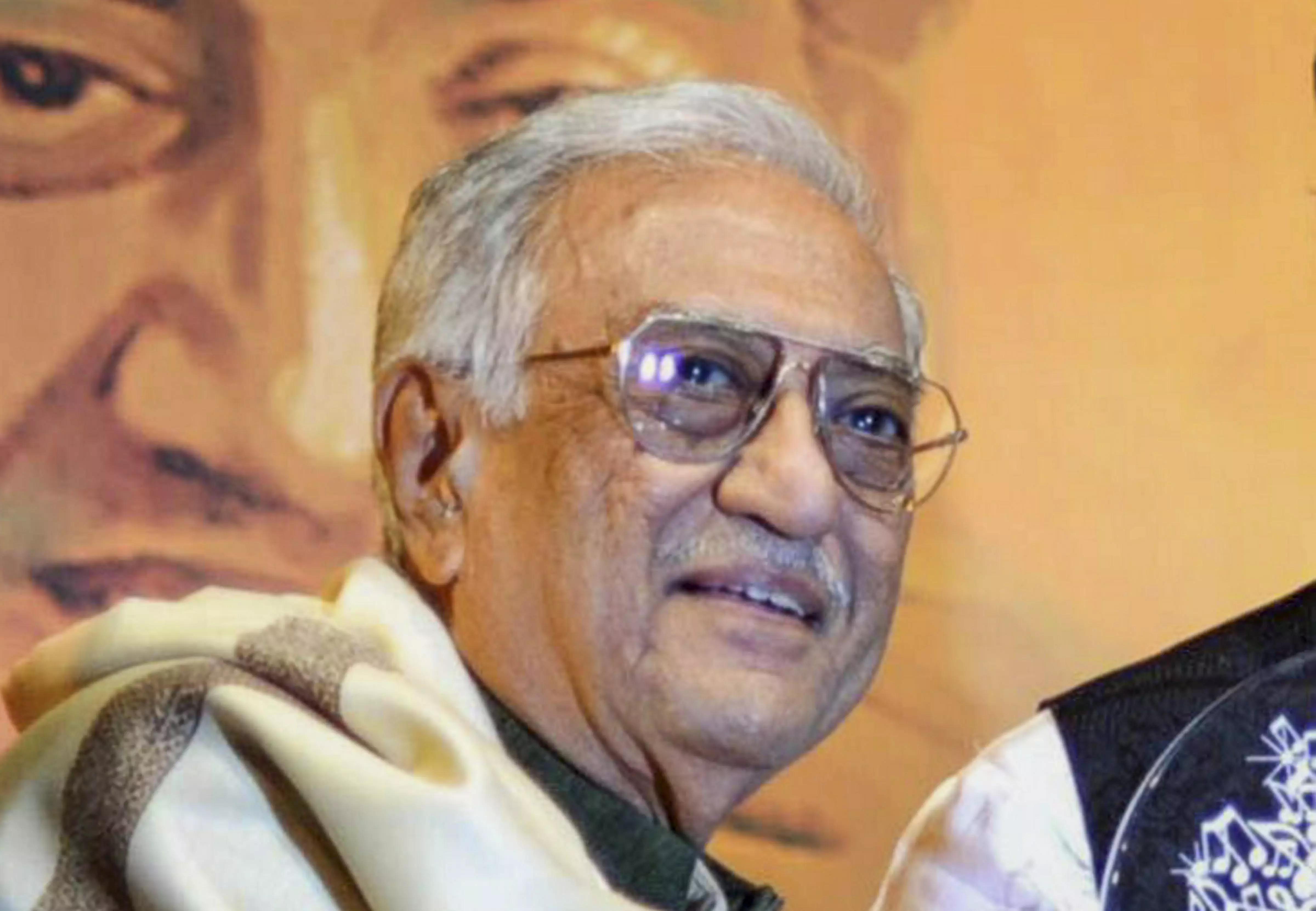
- Home
- India
- World
- Premium
- THE FEDERAL SPECIAL
- Analysis
- States
- Perspective
- Videos
- Sports
- Education
- Entertainment
- Elections
- Features
- Health
- Business
- Series
- In memoriam: Sheikh Mujibur Rahman
- Bishnoi's Men
- NEET TANGLE
- Economy Series
- Earth Day
- Kashmir’s Frozen Turbulence
- India@75
- The legend of Ramjanmabhoomi
- Liberalisation@30
- How to tame a dragon
- Celebrating biodiversity
- Farm Matters
- 50 days of solitude
- Bringing Migrants Home
- Budget 2020
- Jharkhand Votes
- The Federal Investigates
- The Federal Impact
- Vanishing Sand
- Gandhi @ 150
- Andhra Today
- Field report
- Operation Gulmarg
- Pandemic @1 Mn in India
- The Federal Year-End
- The Zero Year
- Science
- Brand studio
- Newsletter
- Elections 2024
- Events
- Home
- IndiaIndia
- World
- Analysis
- StatesStates
- PerspectivePerspective
- VideosVideos
- Sports
- Education
- Entertainment
- ElectionsElections
- Features
- Health
- BusinessBusiness
- Premium
- Loading...
Premium - Events

The airing of Sayani's Binaca Geetmala on Radio Ceylon reflected state control of media that was as pervasive in the 1950s-80s as it is in contemporary India
Prime Minister Narendra Modi joined a galaxy of public personalities, celebrities and media commentators in mourning the recent passing away of legendary radio presenter Ameen Sayani.
In a post on X, Modi wrote that the 91-year-old icon, who began presenting India’s first countdown show much before the term 'radio jockey' became a fashionable self-description, had a voice noted for its “charm and warmth that endeared him to people across generations”.
He emphasised that through his work, Sayani “played an important role in revolutionising Indian broadcasting and nurtured a very special bond with his listeners. Saddened by his passing away….”
The Prime Minister perhaps inadvertently used the word “revolutionising” because revolt or rebellion that it also denotes was, paradoxically, against the same nature of state control and suppression of broadcasting and free expression that is being witnessed in contemporary India.
Sayani’s melodic and engaging voice
For the majority of Indians, the story of Sayani’s life and his role in popularising Hindi cinema music is not completely unknown.
Most know about how his melodic and engaging voice commandeered hundreds of millions in India and in countries where the Indian diaspora lived, to sit in rapt attention with ears glued to their radio initially and transistor sets later.
This habit started in the early 1950s and continued not only till the early 1990s but also later, when it returned on the air waves after a short break. For this entire period, it was ‘Sayani time’ every Wednesday from 8 pm IST.
Yes, we are talking about the Binaca Geetmala, which was started in the Hindi Service of Radio Ceylon (as Sri Lanka was called then) from 1952 and had an uninterrupted run till 1988, when it shifted to AIR’s Vividh Bharati Service for another six years before returning to AIR’s national service for some years after a short break.
Why did Radio Ceylon air Hindi music?
It is not completely unknown why Radio Ceylon ventured into the unknown by starting its Hindi Service and this particular show, in rivalry to the AIR with complete backing of the Indian state.
Yet, it requires retelling, if only for the lessons it holds for understanding acute limitations of the current government’s efforts at regulating content of mass media.
Way back in the 1950s, the revenue model for radio was yet unclear in newly independent India and Ceylon (the country remained a British Dominion till 1972, when it became a republic and was formally renamed as Republic of Sri Lanka).
What then prompted the decision of investing in a new weekly song show in 1952 and then running it week after week for years?
The ‘dirty secret’
And, why did Modi’s homage to Sayani paradoxically serve a reminder to a lesser known ‘dirty secret’ of the otherwise eulogised or vilified – especially in today’s India – chapter of Nehruvian India?
Keskar’s puritanical approach
The origin of Sayani’s stardom and Binaca Geetmala lies in the action of a gentleman named BV Keskar, who went on to become, till date, the longest-serving Information and Broadcasting Minister (from 1952 to 1962).
The man Nehru chose to decide what Indians would hear or watch on radio, or on cinema screens – there was no television then – and how news would be reported and published, was not someone who was in sync with the then Prime Minister’s modernist vision.
Without any consultation, and virtually on his own accord, Keskar decided that Hindi film songs were vulgar, degenerate and far too “Westernised".
He believed that these songs hindered the cultural growth of the young nation. In place of this popular form of music, Keskar opined that the citizens should solely listen to highbrow classical music.
While this led to financial support and a platform to perform for classical musicians who were facing marginalisation after the merger of feudal princely states and zamindaris into the Indian Union, it also pushed out the financially lucrative film music from India to its neighbouring country.
Classical vs popular
The need of the hour was to balance between protecting classical performing arts and its performers while promoting the new form of music that was for the time in Indian history developing a mass following for music, which was different from the devotional form sung or performed in the temple precincts.
Instead, Keskar argued in a widely reported July 1953 article in The Hindu that the country’s appreciation for classical music had “fallen" and was “on the point of extinction" — particularly in North India. He had consequently decided to make the AIR responsible for ensuring that Indians became “intimate with (classical music)".
In many ways, Keskar resembles several members of today’s moral police. He had problems with the lyrics of film songs because they were in Urdu. Additionally, these were also “generally ‘erotic’," as radio historian David Lelyveld wrote in a commentary on music on AIR.
Keskar also mandated that if ever film songs were played, the film’s title would not be announced and only the singer’s name would be publicised.
How Sayani’s show forced AIR's hand
This was undeniably censorship of film music. Within a few years, as Sayani’s show gained in popularity, AIR was forced to start its commercial channel Vividh Bharati which played film songs by after duly censoring them.
Consequently, many iconic songs were never played on AIR channels in those years because they questioned the political leadership and expressed disillusionment at the government’s failure to introduce a just and egalitarian socio-economic order.
In a language that would be music to many in today’s establishment, many famous hits of that 1950s were struck off the AIR lists. These included peppy songs like Tadbeer se bigdi hui taqdeer bana le or Mur ke na dekh from Baazi or Shri 420, either for not being ‘Bharatiya enough’ or for being against the country’s sanskriti (culture).
Proscribing songs
In the proscribed list were also songs with haunting lines penned by Sahir Ludhianvi and set to music soulfully by SD Burman in the Guru Dutt classic film, Pyasa: Kahaan hain kahan hain, muhafiz khudi ke, jinhe naaz hai hind, par wo kahaan hai, kahaan hain kahaan hain ("Where are you, where are you, my protector? Where are those who are proud of India? Where are they, where are they?").
Even banned for the same poet’s more radical indictment of the failure of the egalitarian dream was this song from Phir Subah Hogi. In it, the homeless protagonist sings lines steeped in sarcasm: Chin-o-Arab hamara, Hindustan hamara, rahane ko ghar nahi hai, sara jahaan hamara, Hindustan hamara ("China and Arabia are ours, Hindustan is ours, we have no house to live in, (but) the whole world is ours, Hindustan is ours").
Significantly, Phir Subah Hogi was a film that BJP leaders Atal Bihari Vajpayee and Lal Krishna Advani went to watch after a stinging electoral defeat in the late 1950s.
Keeping counter-culture alive
Regardless of Keskar’s diktats, these songs were heard by Hindi listeners all across the world and became runaway hits of their time and easily available today on multiple streaming platforms. They were heard courtesy Sayani’s ‘revolutionary’ efforts at keeping counter-culture alive.
Although he comes down with an iron hand at any form of counter narrative, Modi could not but praise the memory of Sayani. He certainly could not have avoided the back story of how Radio Ceylon kept broadcasting what was banned in India on AIR.
In ideal circumstances, there is a lot about India’s past that Modi would not like to pay lip service to. But the imperatives of his office force him to even embrace what he may not be very comfortable with.
The Prime Minister may even have been an admirer of Sayani and the countdown show. Yet, similarities between the proscription then and the controls now will certainly not escape his sharp mind. And, is this not a great irony?
(The Federal seeks to present views and opinions from all sides of the spectrum. The information, ideas or opinions in the article are of the author and do not necessarily reflect the views of The Federal.)


